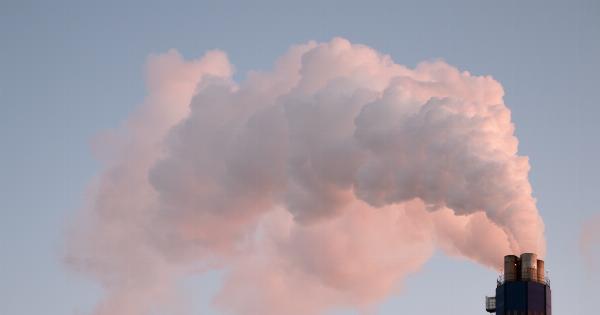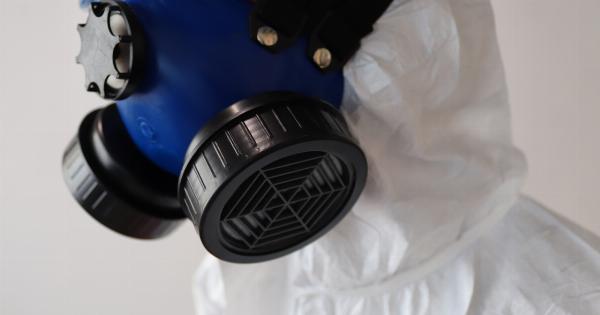The respiratory system plays a vital role in our overall health and well-being, helping us breathe in oxygen and exhale carbon dioxide.
However, certain factors can hinder the smooth functioning of our lungs, consequently leading to a range of harmful effects on our body. This article delves into the harmful effects of lungs combination, exploring the impact of various factors on our respiratory health.
Air Pollution: A Silent Culprit
Air pollution is a major contributor to hindered respiration and poses serious threats to our lungs. The inhalation of polluted air can lead to the deposition of harmful particles, such as particulate matter and toxic gases, in our lungs.
These pollutants can irritate the delicate lung tissues and cause inflammation, leading to respiratory issues like asthma, bronchitis, and even lung cancer.
Smoking: A Hazardous Habit
Smoking is one of the primary contributors to hindered respiration. Cigarette smoke contains thousands of harmful chemicals, including nicotine and tar, which can severely damage the lungs.
Smoking constricts the air passages, irritates the air sacs, and reduces the lungs’ ability to expand and contract efficiently. This harmful habit can lead to chronic obstructive pulmonary disease (COPD), emphysema, and various other respiratory disorders.
Poor Indoor Air Quality
Indoor air quality plays a significant role in the health of our lungs. Poor ventilation, the presence of allergens like pet dander and dust mites, and exposure to mold and mildew can all contribute to hindered respiration.
Inadequate airflow and increased exposure to indoor pollutants can lead to respiratory symptoms like coughing, wheezing, and shortness of breath. Long-term exposure can also cause chronic respiratory conditions and increase the risk of respiratory infections.
Occupational Hazards
Many occupations involve exposure to hazardous substances, such as chemicals, dust, and fumes, which can be detrimental to lung health. Workers in industries like mining, construction, manufacturing, and agriculture are particularly at risk.
Prolonged exposure to these occupational hazards can lead to occupational lung diseases like pneumoconiosis, silicosis, and asbestosis. These conditions can severely impair lung function and cause long-term respiratory issues.
Poor Respiratory Hygiene
Practicing poor respiratory hygiene can also have harmful effects on our lungs.
Failing to cover our mouths and noses while coughing or sneezing can spread respiratory droplets containing bacteria and viruses into the air, increasing the risk of respiratory infections. Additionally, not maintaining proper oral hygiene can lead to the growth of bacteria in the mouth, which can ultimately be inhaled into the lungs and cause respiratory issues.
Asthma: A Chronic Condition
Asthma is a chronic respiratory condition that can significantly hinder respiration. Individuals with asthma experience recurrent episodes of wheezing, breathlessness, chest tightness, and coughing.
While the exact cause of asthma is unknown, both genetic and environmental factors contribute to its development. Triggers such as allergens, exercise, and cold air can induce asthma symptoms and hinder normal breathing.
Respiratory Infections
Respiratory infections, such as pneumonia, bronchitis, and influenza, can also impair lung function and hinder respiration.
These infections can cause inflammation of the lung tissues, leading to symptoms like coughing, difficulty breathing, and chest pain. In severe cases, respiratory infections can result in acute respiratory distress syndrome (ARDS), a life-threatening condition characterized by severe respiratory failure.
Age and Respiratory Decline
As we age, our lung function naturally declines. The elastic tissues in the lungs lose their elasticity, and the air sacs become less efficient in exchanging oxygen and carbon dioxide.
This natural aging process, coupled with factors like smoking and exposure to pollutants, can accelerate the decline in lung function, hinder respiration, and increase the risk of respiratory diseases in older individuals.
Stress and its Impact
Chronic stress has been linked to numerous adverse health effects, including hindered respiration. Stress can lead to shallow breathing or hyperventilation, altering the normal rhythm of respiration.
Prolonged stress can also weaken the immune system, making individuals more susceptible to respiratory infections. Managing stress through relaxation techniques and healthy coping mechanisms is crucial for maintaining optimal respiratory health.
Physical Inactivity and Sedentary Lifestyle
A sedentary lifestyle and lack of physical activity can have detrimental effects on respiratory health. Regular exercise helps improve lung capacity and strengthens the respiratory muscles, facilitating efficient breathing.
Conversely, a sedentary lifestyle weakens the respiratory muscles and reduces lung capacity, hindering respiration and increasing the risk of respiratory conditions.
Conclusion
The health of our lungs is essential for overall well-being, and any hindrance to respiration can have harmful effects on our body.
Factors such as air pollution, smoking, poor indoor air quality, occupational hazards, poor respiratory hygiene, asthma, respiratory infections, age-related decline, stress, and physical inactivity can all contribute to hindered respiration and increase the risk of respiratory diseases. Taking proactive measures to reduce exposure to these factors, adopting a healthy lifestyle, and seeking medical attention when necessary are crucial steps in maintaining optimal respiratory health.





























